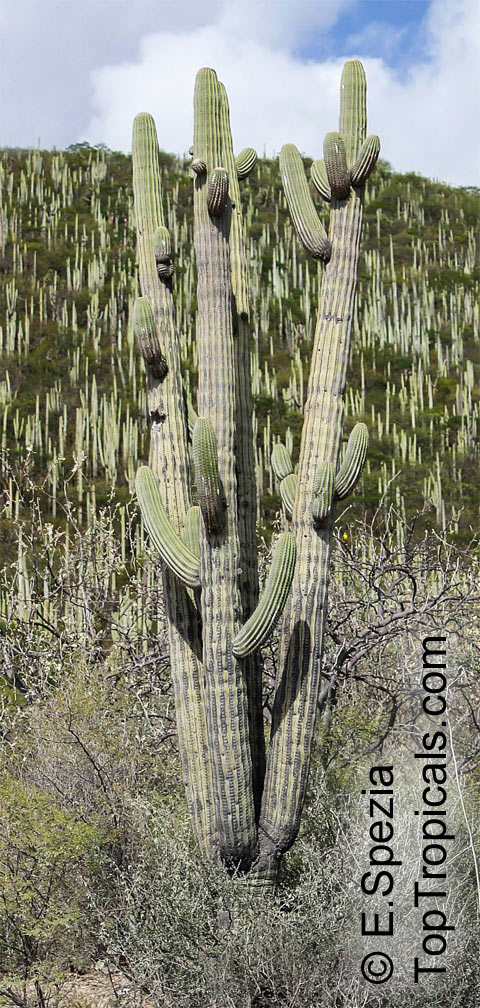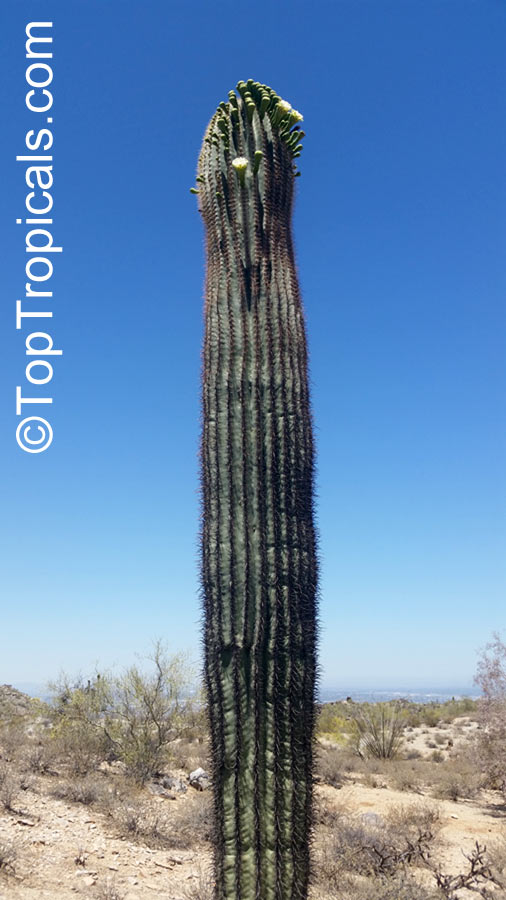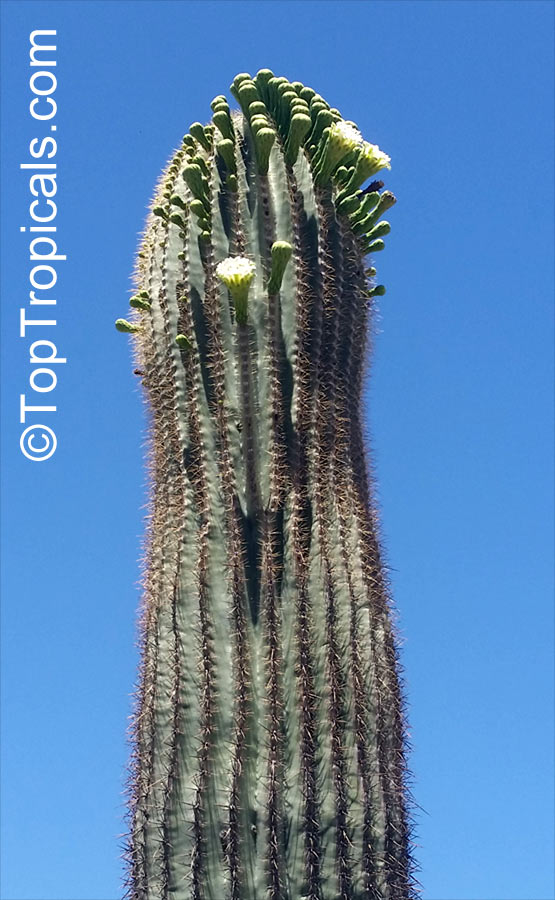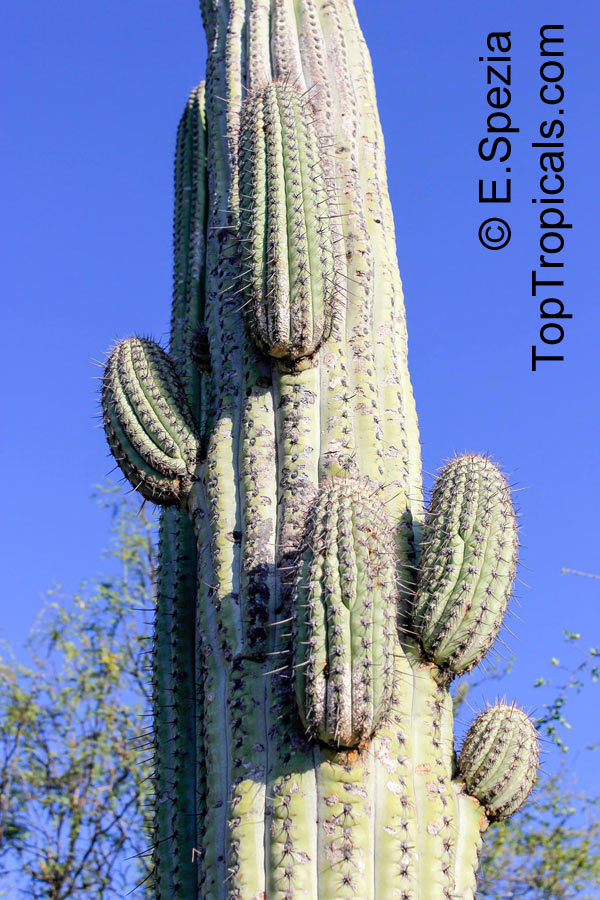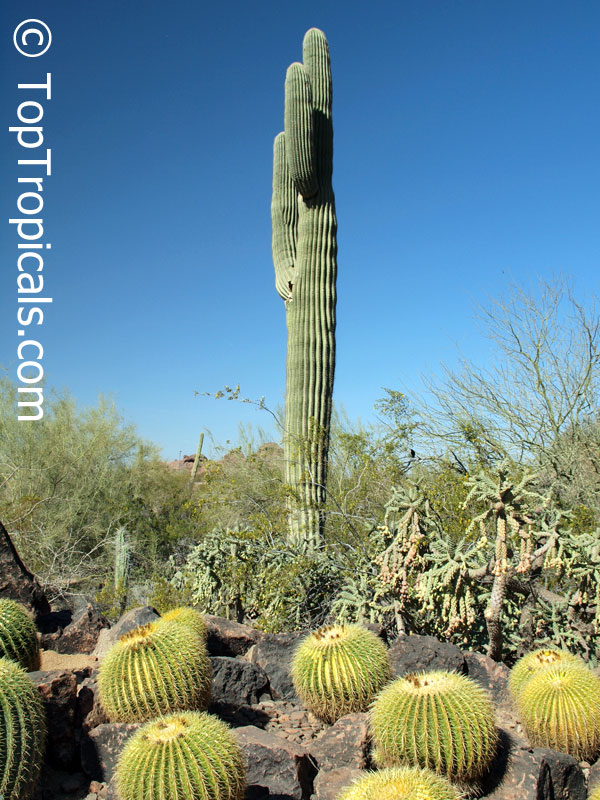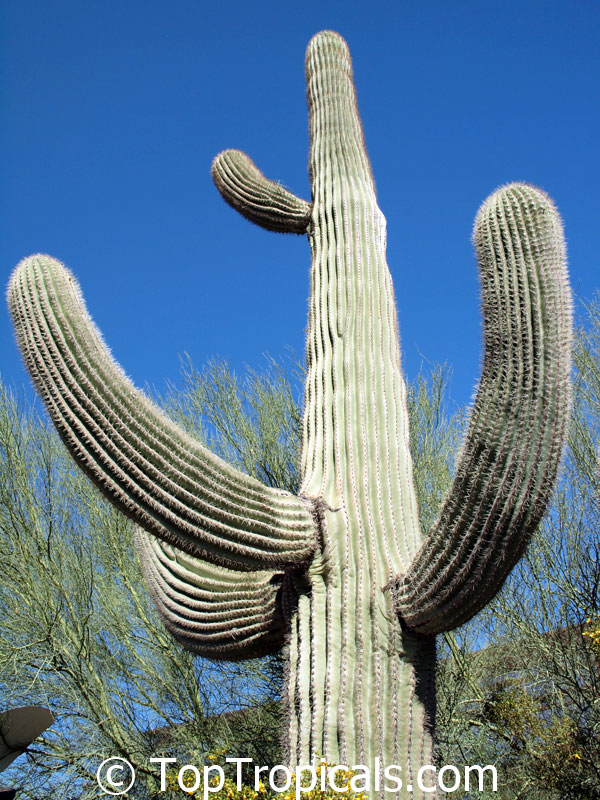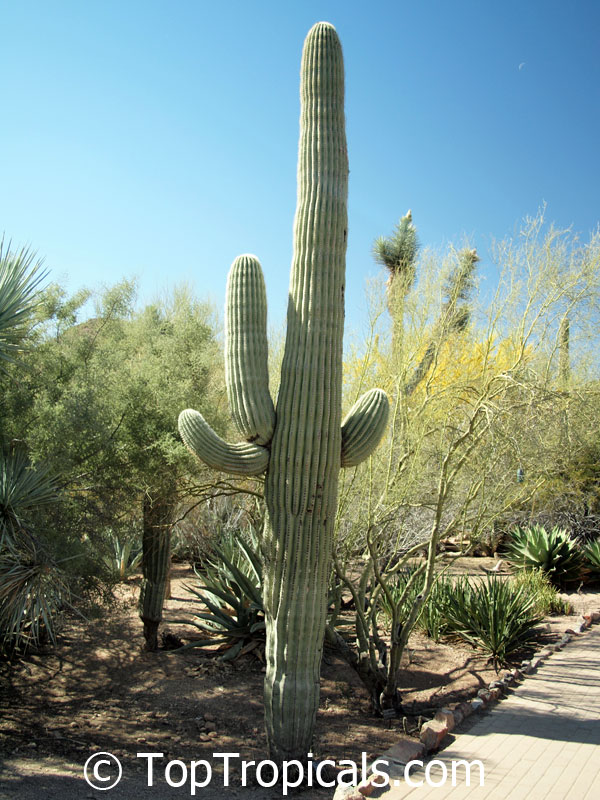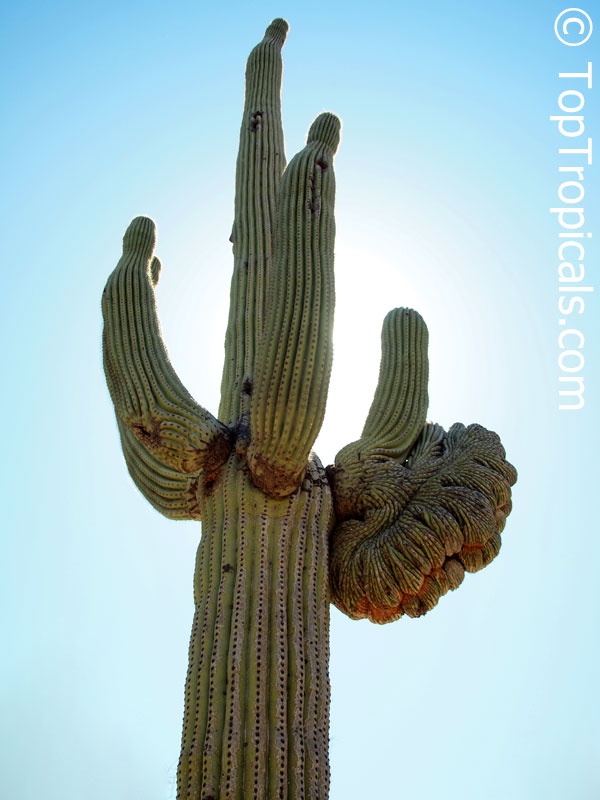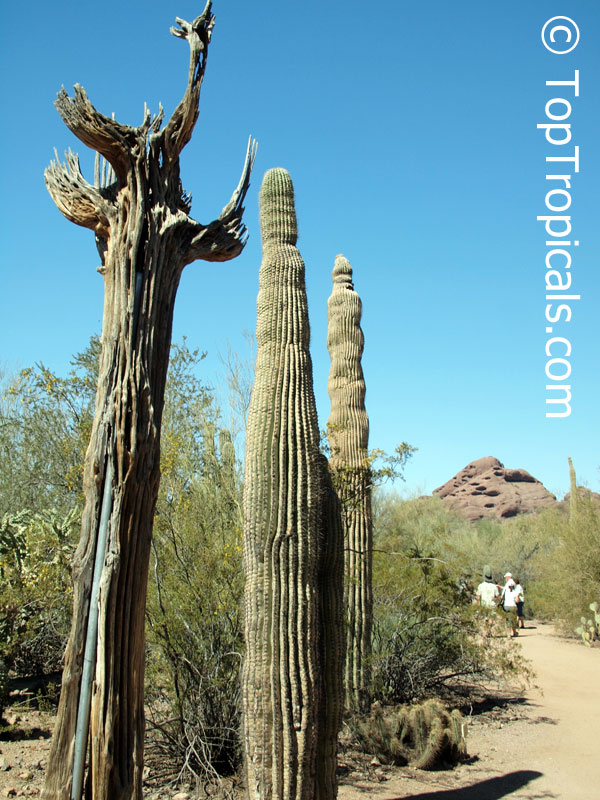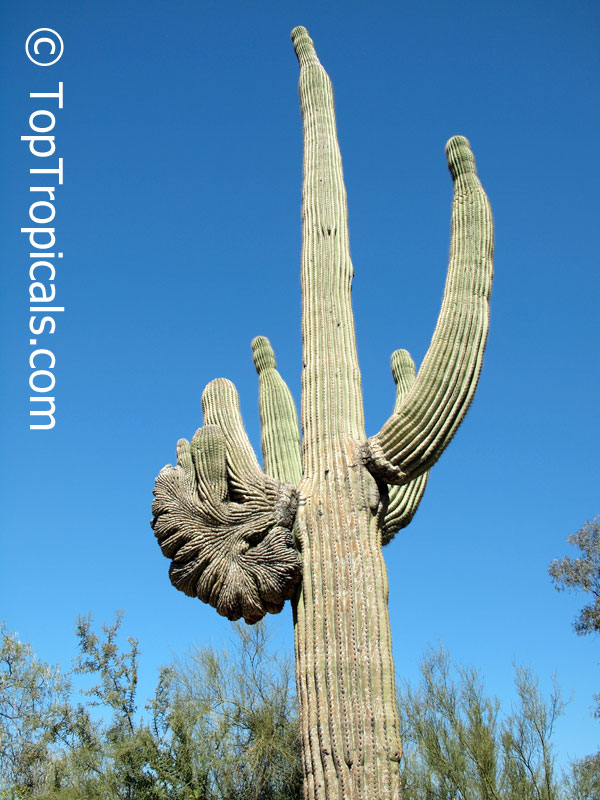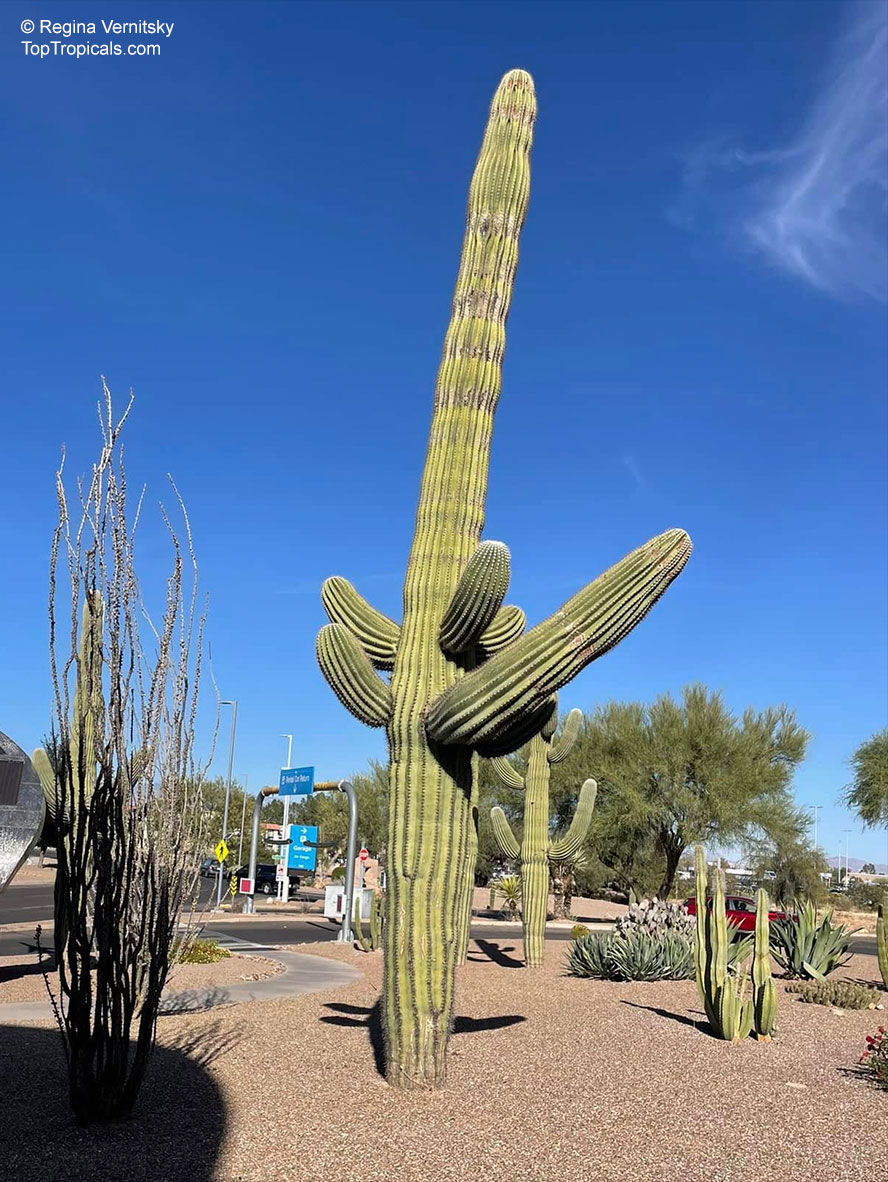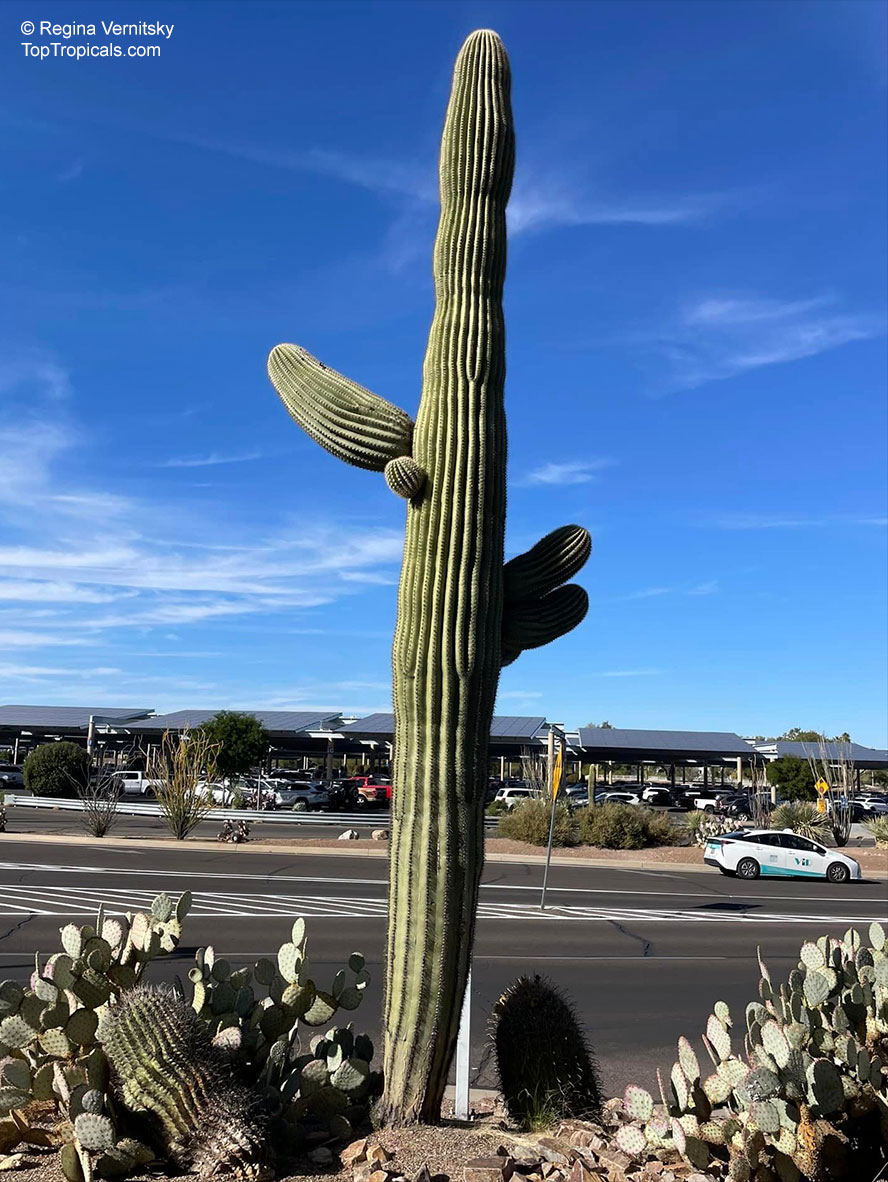Carnegiea gigantea (Saguaro)
Top Tropicals Plant Encyclopedia
Botanical name: Carnegiea gigantea
Common name: Saguaro
Family: Cactaceae
Origin: Arizona







Carnegiea gigantea are typically 10-20 feet high and live for 150-200 years. Although these plants can tolerate some shade, they prefer full sun and well-draining, dry soil conditions. The green fleshy trunks are studded with spines, have reddish-brown spots, and covered with a waxy bluish-white layer for protection. During the spring, off-white flowers bloom on the sides of the stems and attract hummingbirds and butterflies. These flowers are also edible and a traditional food source for Native Americans.
The saguaro is also valued for its edible fruit, which ripen in late spring or summer. These fruits are covered with a thick leathery skin and filled with juicy pulp and several large seeds. The fruit has a sweet, sugary taste and is high in vitamin C and dietary fiber. Saguaro fruits can be made into jams, jellies, and syrups and are a popular treat in the Southwest United States.
In addition to its culinary uses, Saguaro has numerous cultural significance. It is a symbol of the Sonoran Desert and has been featured prominently in films and television series. The saguaro is considered an important medicinal plant and its fruits are used in traditional medicine for various treatments. The fruit also has a long history of being used for its healing properties.
Saguaro can be grown in USDA Zone 9-11 and is easily grown in a pot in cold regions. It requires well-draining soil and full sun in order to thrive. If planted in too much shade, the plant will not flower and may suffer from fungal diseases. To ensure that your saguaro continues to grow and thrive, water it deeply once a month and fertilize it in spring and summer. Make sure to provide a sturdy support for the cactus, as the older specimens can become top-heavy.
